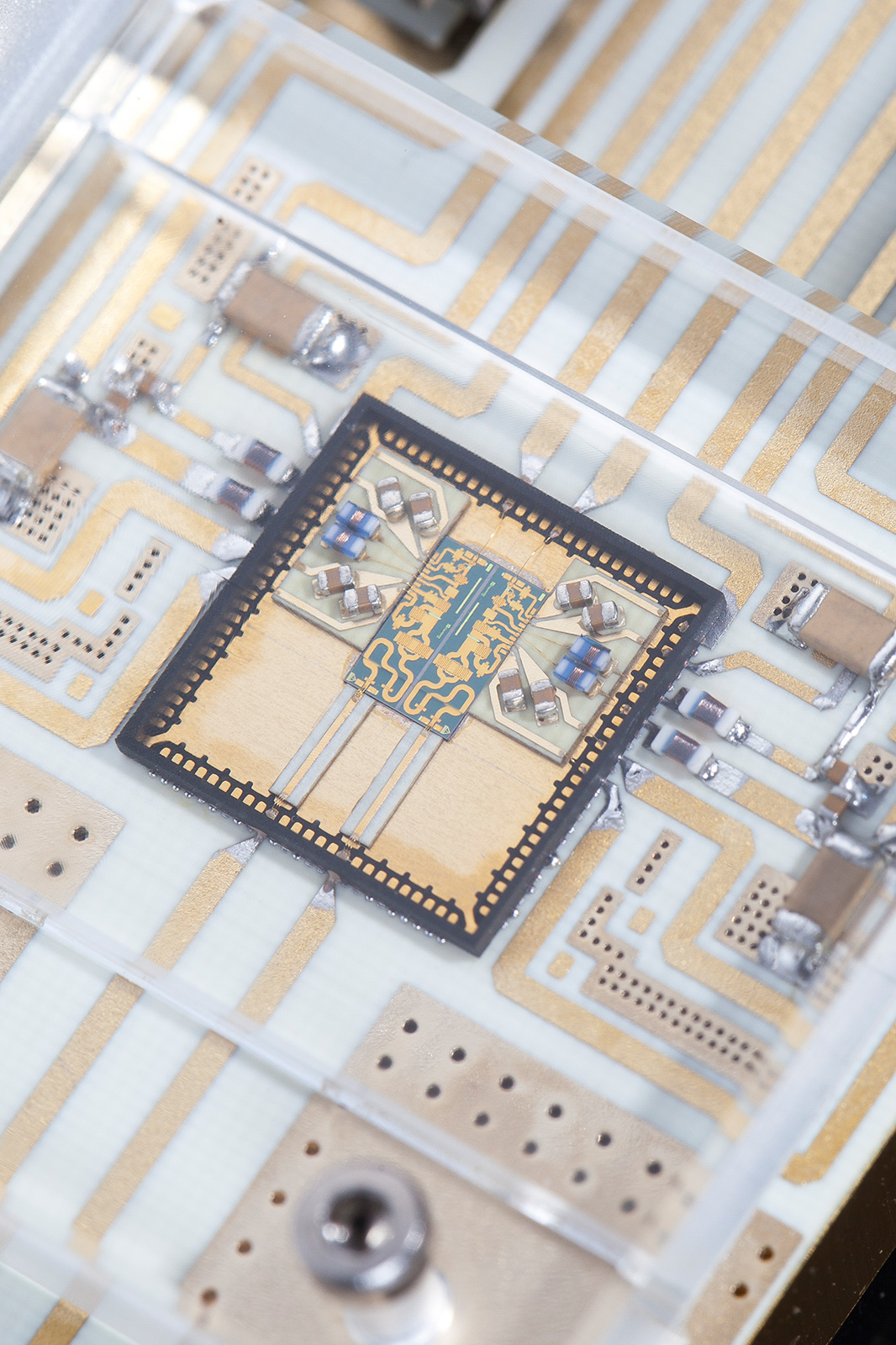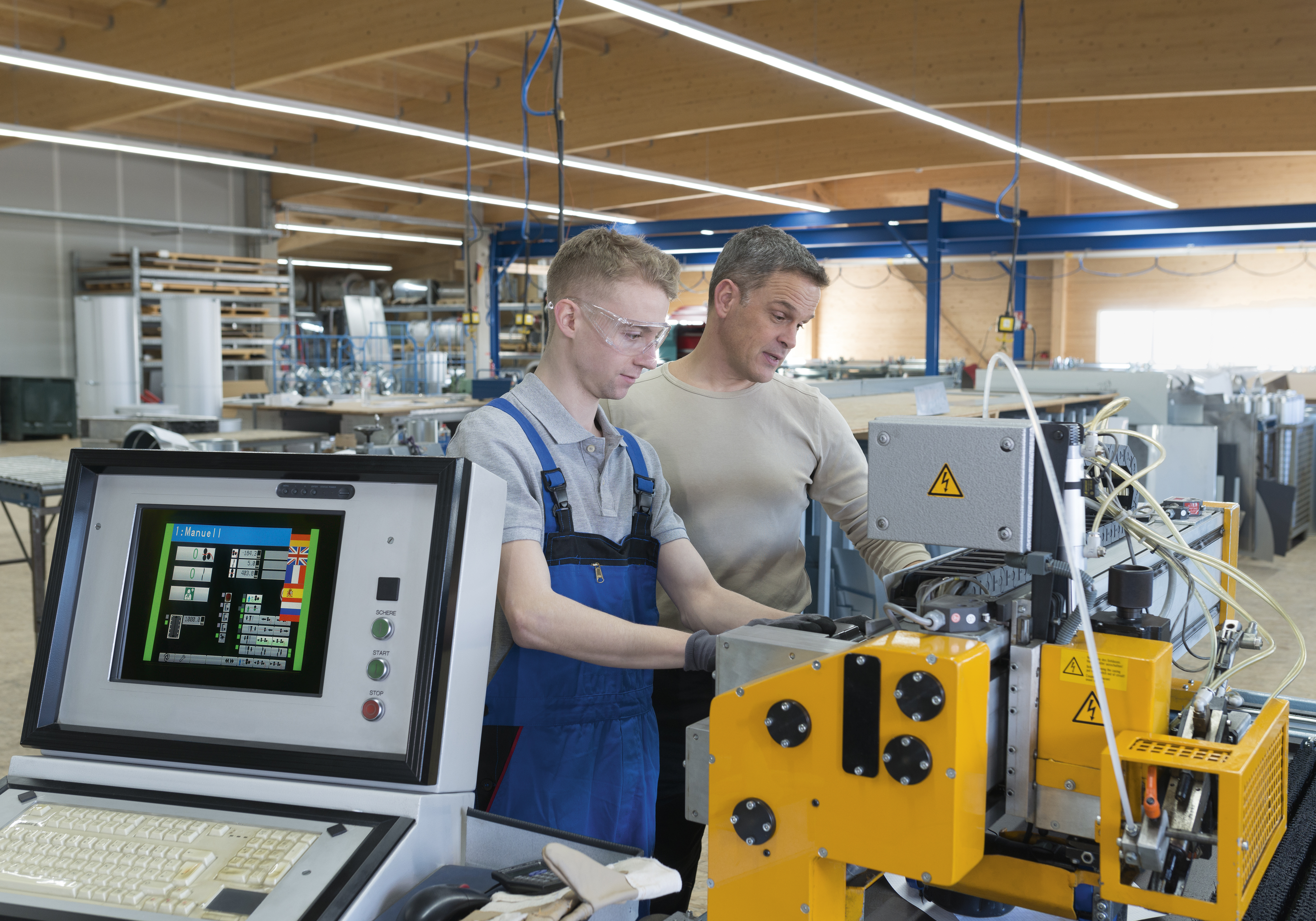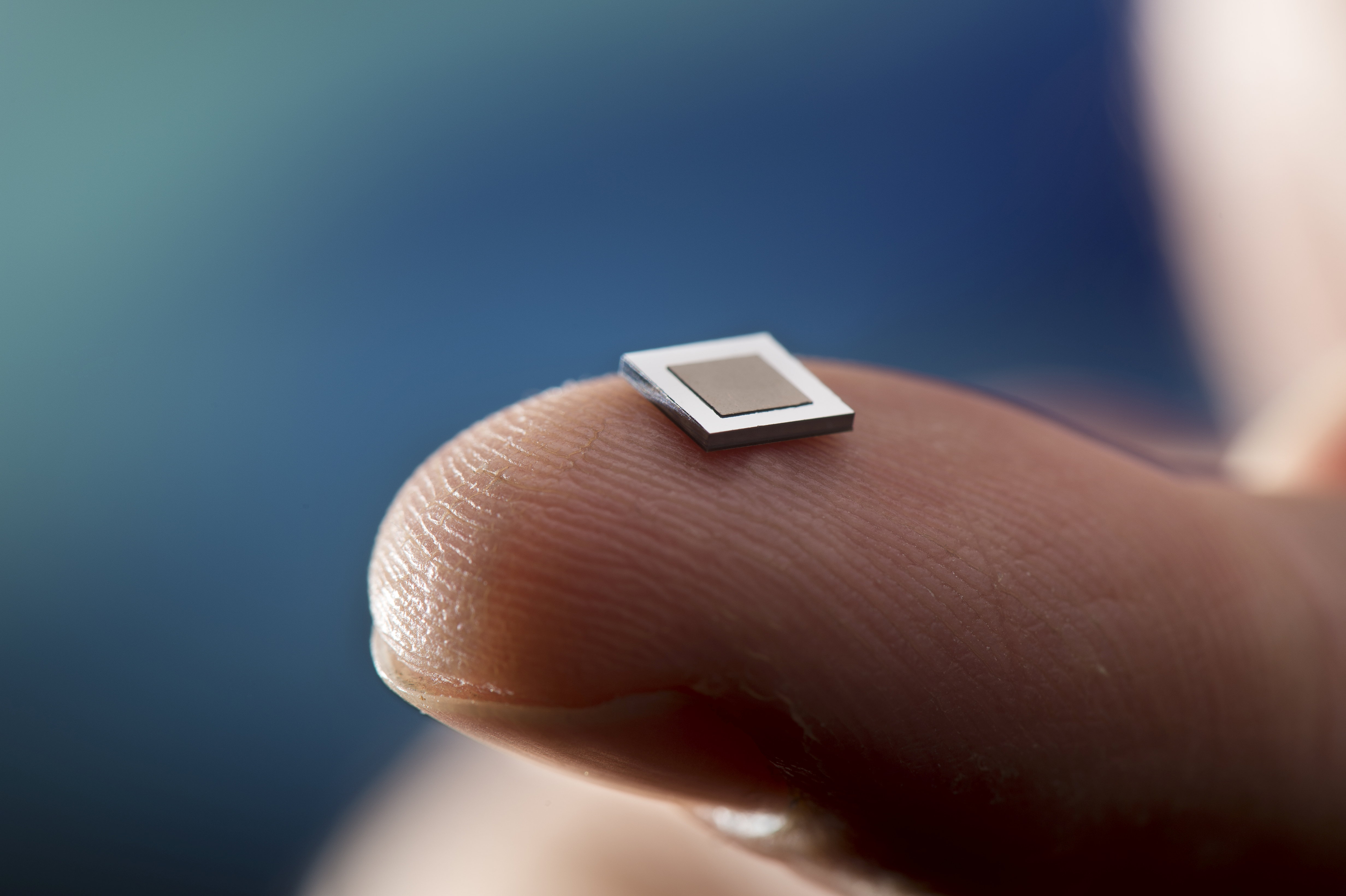Networked sensors – energy-efficient and powerful
The most important components in the Internet of Things (IoT) are tiny sensor nodes that collect information from their environment and pass it on – and the applications are becoming ever more numerous and sophisticated. The problem is that the energy consumption of the nodes when projecting a “Trillion Sensor” future is enormous. Fraunhofer’s lighthouse project, ZEPOWEL, sees nine institutes working on futuristic solutions for an energy-efficient IoT.



The figures speak for themselves: according to a study by the International Energy Agency, in 2013, the energy requirements of all networked devices worldwide corresponded to the total demand for electrical energy in Germany. Within the next few years, this need is projected double to 1140 TWh/a, with networked IoT accounting for a significant share of this growth. For this reason, it is important that the sensors as well as the associated systems become more energy efficient.
A vision of a self-sufficient sensor network
So far, industry and research have not come up with a comprehensive solution: for each application, a single IoT hardware is developed that is more or less energy-efficient. Fraunhofer wants to change that with its Towards Zero Power Electronics (ZEPOWEL) lighthouse project: nine Fraunhofer institutes are working on a scaleable and extremely energy-efficient hardware solution. On the one hand, the nodes themselves are to use much less energy; on the other, energy savings will be achieved at the system level. This means that communication with other systems will also save more energy. The long-term aim is to allow networked sensors to work completely self-sufficiently. In order to get gradually closer to this vision, the researchers are taking an approach that encompasses various aspects. One team, for example, is working on an ultra-low-power wake-up receiver. This receiver ensures that a sensor node does not have to transmit data continually, but rather “awakens” at a certain threshold or through an authenticated request from outside. The module developed in the project is expected to be 1000 times more efficient than existing standard radio solutions and responds only to authorized and cryptographically secured signals that are actually relevant for it. In order to optimize energy management within the node itself, project researchers are working on developing a “broadband harvester”, a device that can “harvest” ambient energy. The energy harvested in this way is stored in a newly developed thin-film battery, which is integrated directly on the hardware chip. This fully integrated approach – encompassing a battery, a harvester, and an energy converter – is a unique feature of the vision of ZEPOWEL.
More accurate measurement with less energy
Innovative sensing concepts will make an important contribution, as well. This is addressed in an additional approach in ZEPOWEL: an air quality sensor will be coupled with a micro-pump. The pump will serve as a measuring amplifier by massively increasing the amount of supplied air. The result will be a sensor that can be built with much less intrinsic sensitivity, while at the same time the data obtained is far more accurate. Whereas today’s sensors can deliver 5000 measurements at a power of 1250 mW, the developed sensor is expected to deliver twice as many readings per second with a power of less than 10 microwatts. The sensor is intended to measure the fine particulate matter in cities. While this used to be extremely time-consuming and is currently only performed at a few nodes at the same time, the new technology is intended to enable a much denser grid and thus more accurate measurement. The intelligent networking of the nodes and the connection to common cloud platforms can be used to create a detailed model of fine particulate emissions in cities. The applications are numerous. For example, traffic flow control could be based on it, and navigation systems could adapt their routes to it independently.
Modular construction kit for every application
The ZEPOWEL lighthouse project has also set itself the goal to provide a modular concept for a large variety of applications, which will allow to implement a plug-and-play principle and remove the need for developing purely application-specific nodes. “We offer a module for many applications: it’s a plug-in system, like with Lego blocks. Click – and it works,” explains Erik Jung from Fraunhofer IZM. The resulting platform consists of individual innovations created by the institutes; these innovations can then be combined as desired and matched with new commercial developments as well to offer a future proof platform. Depending on the application, users can then “cherry pick” their preferred game of components.
An overview of the partners:
The Fraunhofer Research Institution for Microsystems and Solid State Technologies EMFT is developing a highly integrated gravimetric CMOS particle sensor consisting of low-noise analog signal processing, a multi-channel, high-performance analog-to-digital converter, and subsequent digital signal processing. The system is complemented by a microactuator that allows on-demand media delivery. The actuators, driver electronics, and sensors are used modularly as a system-in-package (SIP) in the IoT node.
The Fraunhofer Institute for Embedded Systems and Communication Technologies ESK is developing an algorithm, which minimizes the total transmit power along a multi-hop path of low power nodes, while at the same time enables a reliable end-to-end communication and provides delay guarantees for a given application. The research conducted by this institute, hence, focuses on merging both aspects of power-efficient and reliable wireless communication.
The Fraunhofer Institute for Applied Solid State Physics IAF develops cost-effective and highly efficient power amplifiers and transceiver ICs for the mm-wave frequency range at 60 GHz on the basis of gallium nitride (GaN) on silicon. This approach translates high-performance GaN technology to low-cost silicon substrates for mass application.
The Fraunhofer Institute for Integrated Circuits IIS is working on the development of integrated ultra-low-power radio receivers for ISM bands with standard CMOS technology. In addition to the integration of the radio receiver, encryption procedures that enable secure wake-up processes with minimal power consumption are also to be investigated.
The Fraunhofer Institute for Integrated Systems and Device Technology IISB is conducting research on extremely compact power converters of the next generation, while at the same time reducing power loss to a minimum and developing novel technologies for predictive maintenance of cognitive systems.
The Fraunhofer Institute for Integrated Circuits IIS, Division Engineering of Adaptive Systems EAS is developing an ultra- low-power circuit for self-sufficient sensor applications. Included are components for universal conditioning and analog-todigital conversion of various sensor signals that can be automatically migrated between different semiconductor technologies.
The Fraunhofer Institute for Photonic Microsystems IPMS is developing an ASIC that converts the energy absorbed by the broadband harvester into a charging voltage for the battery. Alternatively, the energy can also be stored on a capacitor. In addition, thin-film processes for the production of functional layers that contain lithium are being developed and evaluated in terms of the extent to which they can be used as nanometer-thin electrode and electrolyte materials for miniaturized lithium-ion rechargeable batteries in microelectronics.
In the project, the Fraunhofer Institute for Silicon Technology ISIT is developing a broadband energy harvester for mechanical and magnetic ambient energy. The efficiency of the silicon component is quadrupled compared to currently available harvesters.
The Fraunhofer Institute for Reliability and Microintegration IZM merges individual components into miniaturized modules that can then be assembled as a module kit depending on the intended purpose. In accordance with the demands for computing power, communication requirements, and energy availability, the appropriate CPU modules are selected and then programmed with firmware that is optimized for energy minimization.
Last modified: